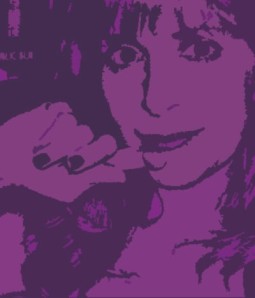Emily Bindiger – Vocals
Eric Nicolas – Guitar
Tim Ouimette – Trumpet
David Barratt – Ukulele and everything else
Original version recorded October 21-22 1965
New version recorded Jan 26 2010
Produced by David Barratt The Abattoir Of Good Taste Brooklyn
For best results play Nowhere Man on repeat while reading this essay.
ABOUT THE SONG
Nowhere Man from Rubber Soul is an early example of The Beatles taking themselves seriously.
John Lennon: “We were just getting better, technically, and musically, that’s all. Finally we took over the studio. In the early days, we had to take what we were given, we didn’t know how you can get more bass. We were learning the technique on Rubber Soul. We were more precise about making an album”.
Years later, John, after much therapy, Yokoism and weed claimed that Nowhere Man was about himself, which unconsciously it possibly was, but at the time of recording there is very little doubt that he was making a pretty limp wristed attack on what he considered to be The Establishment.
Trapped in the suburbs, trapped in his marriage and trapped in his own head John was lashing out at the Grey Men he thought ran the world.
Ironically The Beatles at that very moment were being courted by the powers that be.
Prince Charles wrote asking for the Beatles autographs – and received them. Unfortunately, like most Beatles autographs, they were forged by road manager Neil Aspinall.
Harold Wilson, The British Prime Minister was a fan.
On October 16th 1965 The Beatles received their MBE’s (Member of the Order of British Empire) at Buckingham Palace.
John, was not entirely happy with receiving the award. When he’d originally seen the brown envelope with ‘On Her Majesty’s Service’ written on it he thought he was being called up for the armed services. When Brian Epstein phoned him to discuss it and he told him that he wanted to turn it down, Brian, forever the politician, said that he had to accept the honor. Later, John said: “Taking the MBE was a sell-out to me.”
Just a week after receiving their medals “Nowhere Man” was recorded at Abbey Road.
Nowhere Man is first Beatles song not to be about romantic love. The lyrics are Dylanesque but not in the same league as Dylan. There is a preachiness about these lyrics that is more early George than John.
So why is it so bloody good?
Well… The acapella opening is stunning and unique on a Beatles recording. The band kicks in on the end of the 4th bar with a simple but effective folk rock arrangement.
George’s guitar riff played on a Rickenbacker cuts like glass. Obviously this was deeply influenced by The Byrds who had a hit at the beginning of 1965 with their cover of Bob Dylan’s “Mr Tambourine Man” but the Beatles arrangement is much more restrained and thought out. More English. This is California seen from a misted up window in Dorking. You can hear grey clouds on this recording.
Paul’s arpeggiated bass-line is insistent but never interferes with the melody contrasting with the simplicity of Ringo’s rhythm.
George’s solo, played on a sonic blue Strat, is one of my favorites. Playing a simple melody The Rickenbacker shimmers and shines. The low E followed by the harmonic at the end is a hook in itself.
But it is the vocal arrangement that takes this song from a B- to a solid A. The group vocal on the verses changes to a lead and two harmony vocals reflecting the change of speaking in the third person to a direct address on the bridge.
“Making all his nowhere plans for nobody” was Paul’s lyrical contribution to the song which he uses to upstage John in the coda by singing it loudly as the high harmony at the end.
Nowhere Man is a direct ancestor of “And Your Bird Can Sing” even down to John’s use of a capo on the second fret, write it in D and have to come out in E.
Our version features one of New York’s top session singers Emily Bindiger. I had been listening to a lot of Dusty Springfield at the time of this recording and it shows. I made Emily wear a beehive wig during the recording to which, being the professional she is, complied without hesitation. Special mention should be made of Tim Ouimette’s subtle and tender trumpet on the bridge.
ABOUT THE ARTIST
Emily Bindiger hears voices. The kind that make her harmonize with everything, anything and anyone, including herself.
Emily is a NY singer, producer, and vocal arranger who has recorded and/or performed with such diverse artists as Leonard Cohen, George Benson, Buster Poindexter (David Johansen), Joan Osborne, Lou Reed, Steve Van Zandt, Lesley Gore, Kathie Lee Gifford, and Neil Sedaka, with whom she toured for several years.
Movie soundtracks include Woody Allen’s “Bullets Over Broadway” and “Everyone Says I Love You”, “Donnie Brasco”, “The Hudsucker Proxy”, “Michael Collins”, “Mission to Mars”, “The Stepford Wives”, “Shining Through”, “Joe’s Apartment” (she played a singing bug!), “A Chorus Line”, “Mr. Nanny”, the animated feature “The Tune”, “Hot Rod”, and “Nine”.
She is also a member of the multi-award-winning a cappella group, The Accidentals.
Yes, she hears voices…

